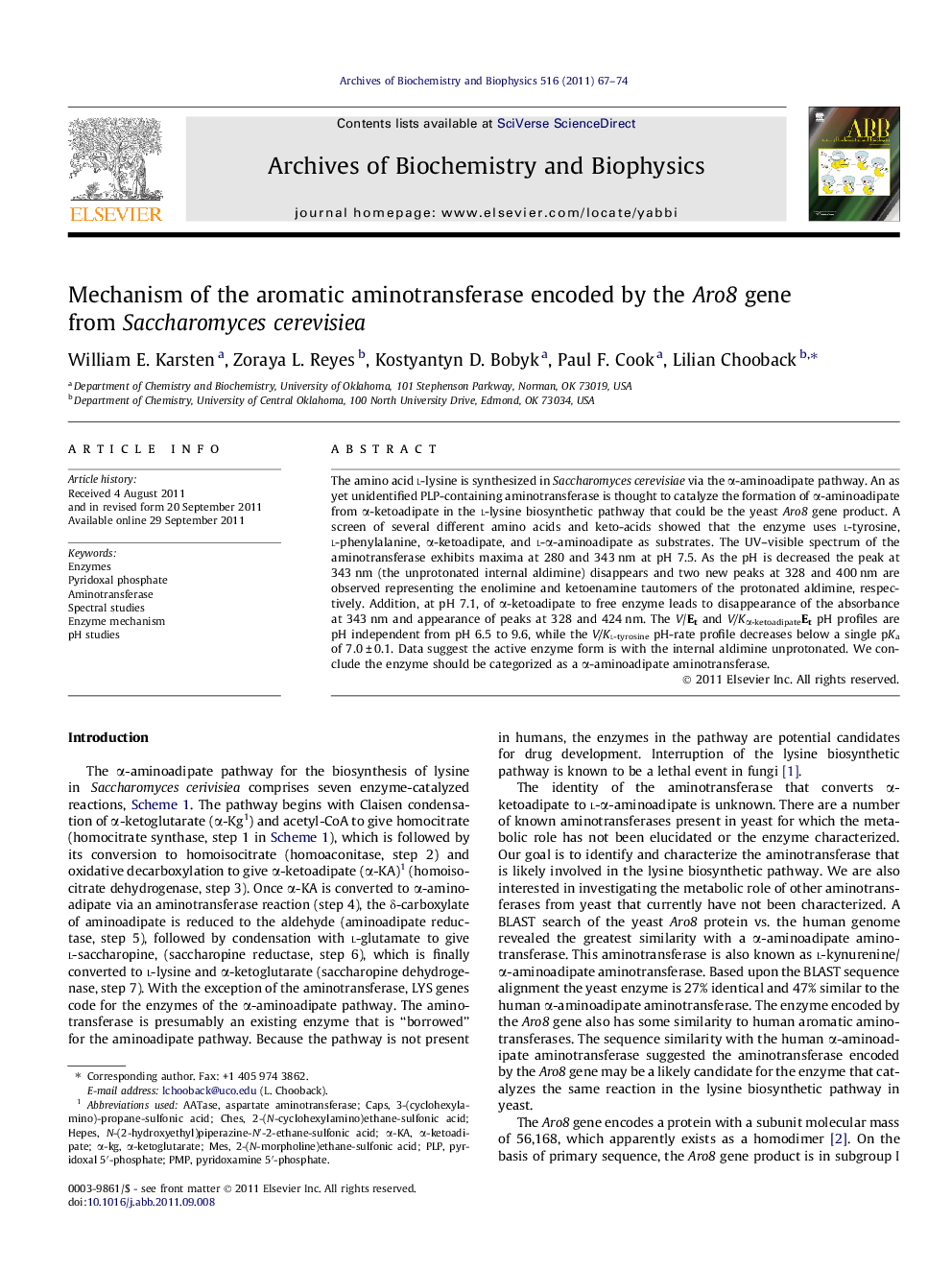| Article ID | Journal | Published Year | Pages | File Type |
|---|---|---|---|---|
| 1925647 | Archives of Biochemistry and Biophysics | 2011 | 8 Pages |
The amino acid l-lysine is synthesized in Saccharomyces cerevisiae via the α-aminoadipate pathway. An as yet unidentified PLP-containing aminotransferase is thought to catalyze the formation of α-aminoadipate from α-ketoadipate in the l-lysine biosynthetic pathway that could be the yeast Aro8 gene product. A screen of several different amino acids and keto-acids showed that the enzyme uses l-tyrosine, l-phenylalanine, α-ketoadipate, and l-α-aminoadipate as substrates. The UV–visible spectrum of the aminotransferase exhibits maxima at 280 and 343 nm at pH 7.5. As the pH is decreased the peak at 343 nm (the unprotonated internal aldimine) disappears and two new peaks at 328 and 400 nm are observed representing the enolimine and ketoenamine tautomers of the protonated aldimine, respectively. Addition, at pH 7.1, of α-ketoadipate to free enzyme leads to disappearance of the absorbance at 343 nm and appearance of peaks at 328 and 424 nm. The V/Et and V/Kα-ketoadipateEt pH profiles are pH independent from pH 6.5 to 9.6, while the V/Kl-tyrosine pH-rate profile decreases below a single pKa of 7.0 ± 0.1. Data suggest the active enzyme form is with the internal aldimine unprotonated. We conclude the enzyme should be categorized as a α-aminoadipate aminotransferase.
► The substrate specificity of the Aro8 encoded aminotransferase was investigated. ► The active enzyme form is the unprotonated internal aldimine. ► The enzyme should be classified as an α-aminoadipate aminotransferase.
